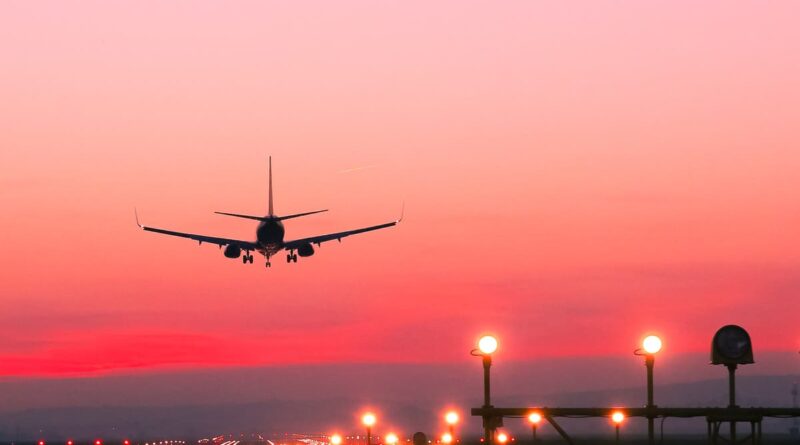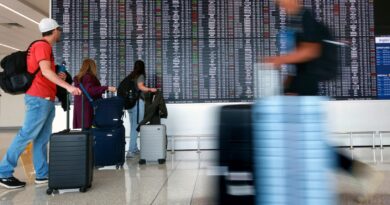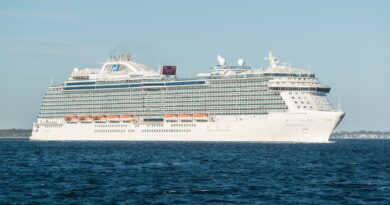These are the world’s most turbulent flight routes
Turbulence is the worst part of flying for many people. Though it’s a phenomenon that happens surprisingly regularly, it can often be alarming – one that can strike fear into even the most seasoned flyers.
But is is often misunderstood; it provides very little threat to modern commercial aircraft, with most injuries occurring when people aren’t strapped into their seats.
Turbulence is defined by the US National Weather Service as a phenomenon that is “caused by abrupt, irregular movements of air that create sharp, quick updrafts and downdrafts” that “occur in combinations and move aircraft unexpectedly”.
The most common type, called clear air turbulence (CAT), is defined by the Federal Aviation Administration as “sudden severe turbulence occurring in cloudless regions that causes violent buffeting of aircraft”. It adds that this “is especially troublesome because it is often encountered unexpectedly and frequently without visual clues”.
So what is the likelihood that you’ll be affected by turbulence, and which flying routes are most affected by it? We answer the key questions.
Read more: What is turbulence and can it cause your plane to crash?
How likely am I to be affected by severe turbulence?
While most flyers will have encountered some mild turbulence before, severe turbulence is far more rare. Some figures put the number of flights affected by severe turbulence as one departure in every 50,000.
Conditions caused by global warming mean that we may see slightly more turbulence in the future. According to data taken over the last 16 years by the Federal Aviation Administration, the average number of injuries related to serious turbulence per year in the US is 33.
Where are the best (and worst) places to sit for turbulence?
Ideally, book a seat near the wingspan in the centre of the plane for the smoothest flying experience. Being near the plane’s centre of mass means you’re less likely to be affected by forces such as wind, drag and lift.
In addition, the front of the plane experiences less noticeable effects of turbulence than the seats in the back, as they are more affected by wind hitting the tail of the aircraft.
What are the most turbulent flight routes around the world?
Data from turbulence prediction website Turbli, which has analysed around 150,000 routes, shows the most turbulent journeys of 2023. Routes are ranked according to “eddy dissipation rate”, which Turbli founder Ignacio Gallego Marcos describes as the “measure of the turbulence intensity at a given spot”.
The 1,180-mile journey between Santiago and Viru Viru International airport in Bolivia was ranked as the most turbulent, with the route between Almaty, in Kazakhstan, and the capital of Kyrgyzstan, Bishkek, ranked second.
Six of the most turbulent journeys were domestic routes in Japan and China (four involved routes taking off or landing at Lanzhou or Chengdu or Xianyang), while two European routes also featured. Milan to Geneva is the most turbulent route in Europe (and fifth-most turbulent in the world for 2023), while Milan to Zurich came in at tenth.
Mr Gallego Marcos explained that routes over the Andes or Alps “appear high in the ranking due to mountain wave turbulence over the Andes and Alps”, while the routes in Japan and China “are turbulent due to high jet stream activity”. The Met Office defines the jet stream as a “core of strong winds around five to seven miles above the Earth’s surface, blowing from west to east”.
This goes some way to explaining the repeated entries of some airports, with certain destinations featuring heavily in the continent-specific lists. For example, routes taking off or landing in Zurich feature five times in the 10 most turbulent routes in Europe, while there are five routes involving Chile’s capital, Santiago, in the 10 most turbulent journeys in South America.
Below are the top 10 most turbulent journeys in the world in full, according to Turbli data:
1. Santiago (SCL) – Santa Cruz (VVI)
2. Almaty (ALA) – Bishkek (FRU)
3. Lanzhou (LHW) – Chengdu (CTU)
4. Centrair (NGO) – Sendai (SDJ)
5. Milan (MXP) – Geneva (GVA)
6. Lanzhou (LHW) – Xianyang (XIY)
7. Osaka (KIX) – Sendai (SDJ)
8. Xianyang (XIY) – Chengdu (CTU)
9. Xianyang (XIY) – Chongqing (CKG)
10. Milan (MXP) – Zurich (ZRH)




